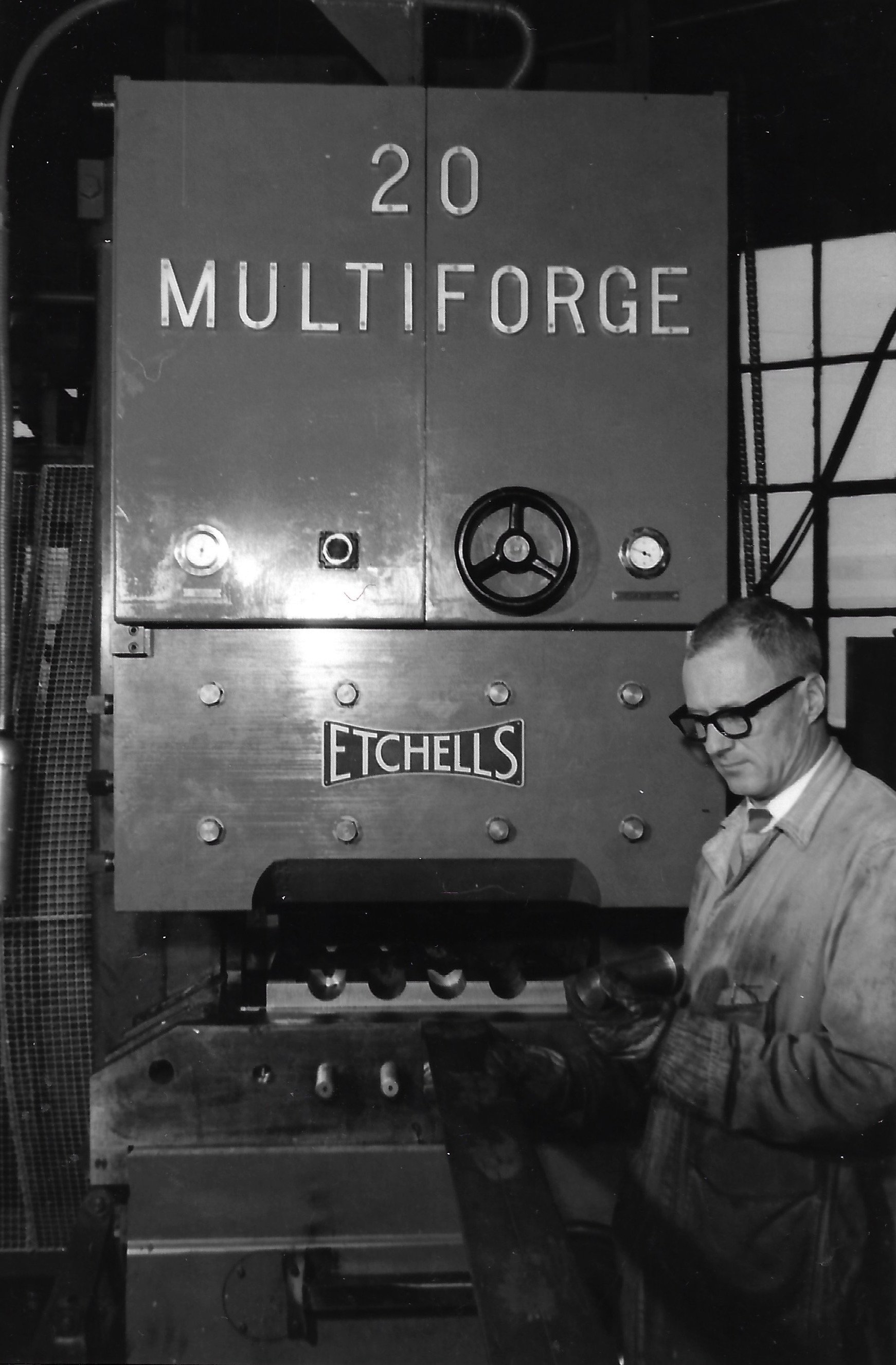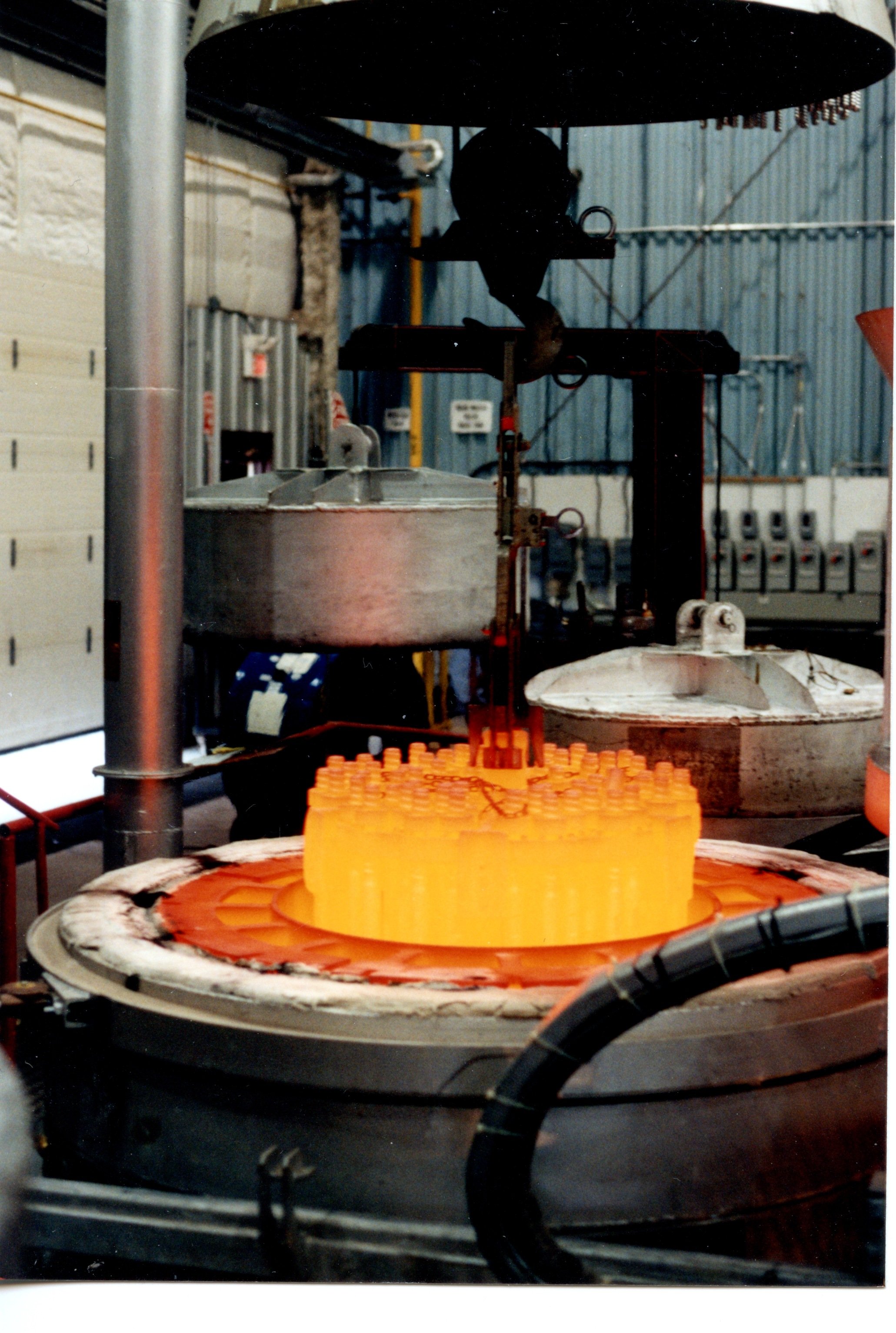Parts of a Mining Drill
Manufacturing Drilling Products
Craig Bit’s equipment and metal-working processes changed drastically over the years but some methods remained consistent. Steel had to be cut, shaped, heat treated, brazed, cooled and inspected before being shipped to mines around the world. The following is a description of a few key manufacturing processes.
North Bay Museum, Craig Bit Collection.
Cutting and Shaping
To produce drilling products, the Craig Bit Company’s raw steel was shipped from Atlas Steel in Welland, Ontario. First, the steel would go through a cutting process.
The steel would sometimes undergo a forging process before getting shaped further by grinding or a machine lathe. In the forging department, the steel was then heated to approximately 1700 degrees Fahrenheit to make it malleable.
In this photo, Cecil Knight, head of the forging department, stands next to the forging press.
Forging machine, circa 1990.
North Bay Museum, Nugget Collection.
Workers grinding steel rods to form a tapered shape, circa 1950.
North Bay Museum, Craig Bit Collection.
North Bay Museum, Craig Bit Collection.
Heat Treatment
After shaping, the resulting metal structure would receive a heat treatment.
The steel rods were then placed in pots to harden. It was important to degrease the steel first.
Before the advent of carburization at the plant, the metal was often heated with salt pots. This was one of the most dangerous jobs in the factory since one tiny drop of water near the pot could cause an explosion.
Later, the company would introduce a carburization treatment, where the steel was submerged into a tightly sealed furnace heated to 1650 degrees Fahrenheit. Then a carbon gas would get released through holes around the sides of the furnace to harden the rods. The carbon gas was often mixed with a carrier gas to distribute the mixture throughout the furnace chamber.
The high temperatures in the carburization furnace resulted in a microscopic crystal structure known as austenite. Before further treatment, the rods needed to go into a tempering furnace where the austenite was transformed into martensite, a more chemically stable structure.
Scorching hot rods emerge from a gas carburizing furnace.
North Bay Museum, Craig Bit Collection.
North Bay Museum, Craig Bit Collection.
North Bay Museum, Craig Bit Collection.
North Bay Museum, Craig Bit Collection.
Brazing
Some steel bits had tungsten carbide inserts. Tungsten carbide is a metal that is harder than steel. To combine the steel and the carbide, drill bits were brazed by putting copper or silver flux material into slots, and then heated within a coil.
Brazing is similar to soldering wherein two pieces of metal are melted together using a filler metal with a lower melting point. The drill bits were cooled and then buried in mica overnight to cool further.
Here, Aime Mathieu, a worker from the Brazing Department, stands next to his tools.








